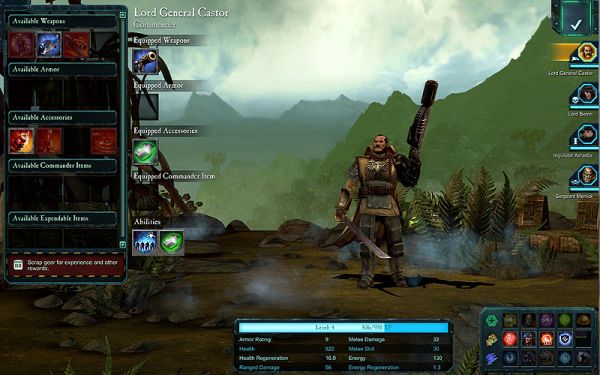Never mess with a pirate Ork.
While there are many fine PC-exclusive co-op games, they don’t come as often as they should. When it was released in 2009, the original Dawn of War 2 was a breath of fresh air; stripping out excessive micromanagement that normally plagues RTS games in favor of small squad combat, adding in a robust loot and leveling mechanic, and a glorious helping of co-op. With one successful expansion under its belt, Relic has decided to change things up slightly with the latest iteration: Retribution.
Taking place ten years after the events of Chaos Rising, the previous expansion, the Emperor decides he’s had enough with this troubled sector and orders an Exterminatus, which is basically a blanket order for glassing every planet in sight. Unfortunately, the reason this order came through may be for false ones, so the campaign centers around trying to determine how it can be stopped.
Rather than another romp with the Blood Ravens alone, Retribution allows you to select from an additional five races to see the story from their perspective. Gameplay itself hasn’t changed too much from the previous version, although you are now able to call in basic squads to supplement your forces by capturing bases. These bases also heal injured units, resurrect fallen heroes, and call in reinforcements for any squads that have suffered casualties. Field upgrades make their return from the original Dawn of War games, allowing you to specialize squads depending on what challenges might crop up during the campaign.

Leveling your Hero units has been streamlined, but still allows for great customization.
The currency (requisition/energy) for all of these squads and upgrades is obtained in set amounts in each mission, and your population cap is determined by your initial squad setup. While hero units are still the focus, and the only units that can be outfitted with wargear collected during the missions, you may now choose to use an Honor Guard in their place, which range from upgraded basic squads to vehicles. Taking an Honor Guard over a Hero unit may result in a weaker starting force, but you gain the benefit of being able to recruit a more perse force in larger numbers. Honor Guards also have the benefit of being reinforced free-of-charge.
Between levels, rather than only obtaining wargear upgrades, you can also choose to acquire upgrades to your basic units as well. These upgrades come in the form of additional field upgrades, such as a special weapon, or adding commander units, bolstering its strength. Your Heroes still level up, but their skill trees are now streamlined - rather than building gradually towards new abilities, each point you put in a combat discipline will earn a significant new ability for your hero. The best part of the new system is that if you choose to take an Honor Guard over a hero, some of the abilities transfer over to the basic units, making them more powerful. There’s a real give-and-take dynamic in place now when determining how to deploy for a mission; do you go for the Heroes with all of their gear and abilities, or do you opt for stronger and more numerous units?
While all this sounds good on paper, in execution it’s slightly less impressive. You see, no matter what race you select, you’re playing on the same campaign maps in roughly the same order. The campaign is shorter, more generic than its predecessors, and the story is altered only slightly to fit each race’s particulars. In the end, everyone is working to stop the Exterminatus. Combat is still entertaining and brutal, but there’s definitely something missing.
.jpg)